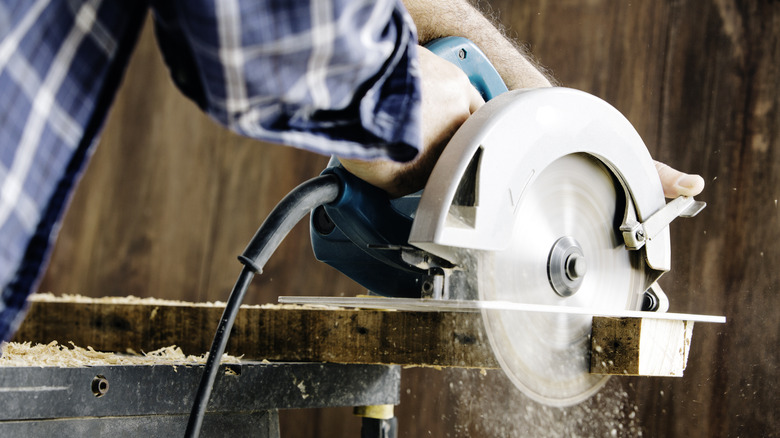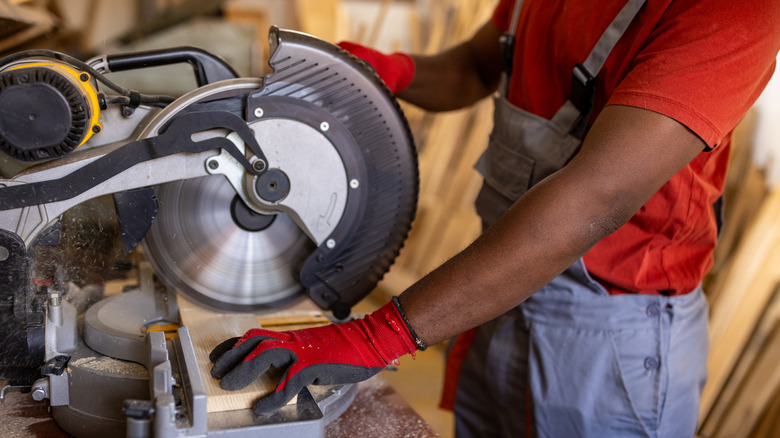The Popular Way To Sharpen A Circular Saw Blade Isn't Worth Trying
A new circular saw blade might cost you 10 bucks or so, but the trip to your local big-box hardware store to buy one could cost you more than that in gasoline... and add hours to your project's timeline. So when a circular saw blade gets dull, it seems both thrifty and efficient to have a go at sharpening it. So far, so good. But then you see a YouTube video like this one from Performer of Ideas (@Performerofideas) showing you a simple and quick way to sharpen the blade, and even demonstrating the before and after effectiveness of the sharpened blade. As an even-tempered and peace-loving person, you skip the YouTube comments and try out this workshop hack. Within a minute or two, some combination of the following things has happened: You've destroyed your saw blade. You've lost an eye. You've lost, or at least remodeled, a finger or two. And you haven't sharpened your saw blade. What went wrong?
Common sense will occasionally trip you up, especially when taking a cursory look at something designed to trigger that "oh, that makes sense" circuit in our brains, as this hack does. While you can sharpen a knife with nothing more than a coffee mug, saw blades are complex ... too complex for this apparently reasonable approach to blade sharpening. There are ways to sharpen table saw and other circular blades, but this isn't one you should trust.
Use this hack to do everything wrong when blade-sharpening
Performer of Ideas' approach seems perfectly sensible. He appears to reverse the blade in his saw, then runs it while holding a sanding block to the blade, grinding against its outside diameter. While it looks like sharpening, this approach has a number of problems. First, it doesn't actually sharpen any of the teeth for a saw blade configuration known to humankind. Circular saw teeth cut with the leading edge of the tooth shape, or with the leading face of carbide tips brazed onto the steel discs at the factory. Grinding the outer diameter of the blade, called jointing, is a process for shaping the blade before it's initially sharpened. Grinding the outer edge after manufacturing has the effect of altering (and eventually eliminating) the back relief angle of the tooth, which minimizes blade contact with the workpiece, thereby reducing friction and heat.
Remember those carbide tips? They must be shaped with a diamond-impregnated abrasive. While grinding the tips of the carbide might provide some minor improvement in cutting, without a diamond surface you won't even be doing that. Worse, attempting to apply force to these from the wrong direction can cause the tips to dislodge and fly about the workshop, as happened to several commenters. As if that weren't enough, holding a sanding block with your fingers that close to a circular saw blade is inviting unpleasant emergency room and hand surgeon visits. There are also some clear signs that this video intentionally misrepresents the effectiveness of the method, which is troubling when the outcomes are this uniformly awful.

